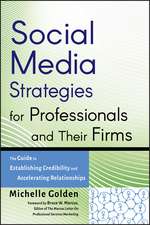Sun Tzu's the Art of War Plus the Warrior Class: 306 Lessons in Strategy
en Limba Engleză Paperback – 20 apr 2014
Preț: 244.19 lei
Nou
Puncte Express: 366
Preț estimativ în valută:
46.73€ • 50.74$ • 39.25£
46.73€ • 50.74$ • 39.25£
Carte disponibilă
Livrare economică 01-15 aprilie
Preluare comenzi: 021 569.72.76
Specificații
ISBN-13: 9781929194759
ISBN-10: 1929194757
Pagini: 352
Dimensiuni: 152 x 229 x 19 mm
Greutate: 0.47 kg
Editura: Clearbridge Publishing
ISBN-10: 1929194757
Pagini: 352
Dimensiuni: 152 x 229 x 19 mm
Greutate: 0.47 kg
Editura: Clearbridge Publishing











